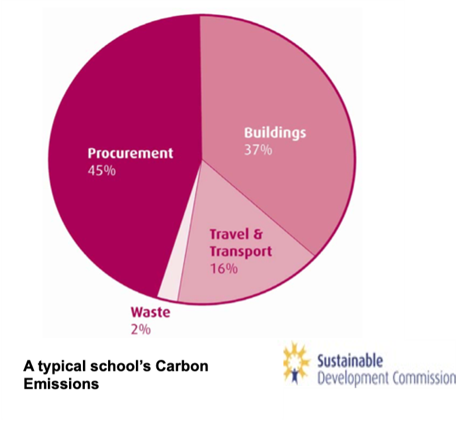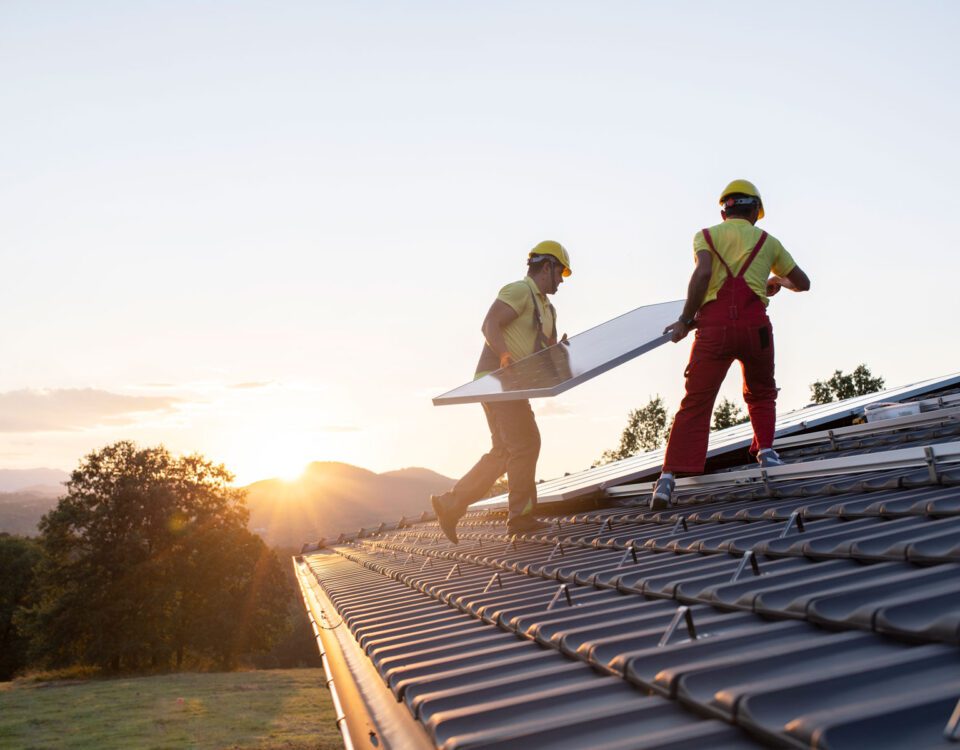Multi Academy Trusts go net zero

The journey to net zero is a priority for many organisations but educational academy trusts have a more crucial role to play than most, says Blue Marble’s education consultant John Edwards
When it comes to the nationwide challenge of reaching net zero by 2050, schools are well placed to be in the vanguard of forward-thinking solution-based innovation. Academy trusts that embrace a carbon-responsible teaching & learning environment are not only equipping the next generation with the skills, attitude, values and knowledge to redress climate change, they’re also sending positive ripples into society at large.
‘Surveys show that people are very happy for schools to take a lead in this arena and provide guidance, not only to students but also to their communities,’ says Blue Marble’s education consultant John Edwards.
‘The reach a school can have through its students, their parents and guardians, and the neighbourhood is huge. The individual carbon footprint of a school might be relatively small compared to other public sector organisations, but the impact can be pretty significant.’
Start with small steps
Academy trusts often assume the first thing they need to do on their journey towards net zero is to focus on upgrading or replacing older buildings–not to mention the outdated and inefficient heating systems that often inhabit them. However, trusts that enter into the consultation process with Blue Marble are often relieved to discover there are smaller, more achievable and less costly steps they can take to reduce their carbon footprint.
‘There is a perception that getting to carbon neutral is all about heat pumps and solar panels, which cost an awful lot of money,’ says John. ‘Those things are important and will have to be done at some point, but that shouldn’t be a barrier to getting started. There is a lot that trusts can do that’s less costly.’
IT, for instance, can play a major part in a school’s carbon footprint. ‘IT is one of the biggest consumers of electricity in a school. Although many products claim to be energy efficient, in practice, a lot of their energy-saving features are never enabled. There is plenty a school can do once they become aware of that.’ The most eye-opening data, however, often relates to food and catering.

Catering provision is key
John, along with academics from The University of Edinburgh, has created a tool set that calculates the carbon footprint of school catering. ‘We were asked to look at 14 schools from a trust that had 34 schools in total. The results showed that the trust’s carbon footprint from its catering at those 14 schools was higher than the combined carbon emissions from all of its buildings across 34 sites. ‘It was a surprise because their catering provider was pretty good. However, it wasn’t until we’d analysed really specific data that we could accurately ascertain what needed to be addressed in order to put together a targeted plan.’ Food choices and food waste are often key factors when it comes to calculating the carbon footprint of a school catering service.
‘There’s a fallacy that it is all about food miles but, unless your produce has been flown in, that is pretty insignificant in terms of an overall carbon footprint,’ says John.
‘The food item itself and how it has been grown is the single most contributing factor. Of that, red meat–and beef in particular–is the biggest offender in terms of carbon emissions and biodiversity loss. Many trusts are now moving away from old-fashioned ideas that school meals must be based around heavy meat-protein consumption.’
Food waste is another big hitter, especially if it goes to landfill, and can account for as much as 20% of a school’s catering carbon footprint. ‘It’s very easy for schools to resolve that. By diverting the food waste to an anaerobic digester, it flips the other way and becomes a carbon positive.’
Although the UK government’s target of reaching net zero by 2050 is a golden opportunity for many academy trusts to create a carbon-neutral learning environment, the practicalities can be challenging.
DFE Sustainability Support for Education
‘Schools have come out of a difficult period with Covid and are also under pressure in terms of their financing. On top of that are the day-to-day challenges of safeguarding and Ofsted, which sometimes mean senior management have little bandwidth to take on an extra challenge like working towards net-zero.’
To address this Blue Marble are proudly working as one of the lead Consortium partners, to support and deliver the Department for Education’s (DFE) new ‘Sustainability Support for Education’ support hub. This is part of a number of DFE sustainability services launching this summer, all aimed at supporting education settings across Early Years, Primary, Secondary, Further and Higher Education to easily access expert help, guidance and resources.
Research has shown that the sustainability agenda can be overwhelming and education settings don’t know where to start or who to trust. The new DFE sustainability services, therefore, aim to remove as much of the time and research overhead as possible by providing relevant and trusted support directly matched to a settings context and where they are on their sustainability journey.
External expert review
For those Education settings and Academy Trusts that are already making good progress in their Net-Zero journey, then turning to an outside consultancy like Blue Marble to provide an external expert review, help crunch the numbers, and remove the guesswork from their green agenda, can be an invaluable next step.
‘When any public sector organisation sticks its head above the parapet, critics will shoot at it. Trusts therefore need to be certain of their facts to avoid being accused of greenwashing or greenwishing. Having a third party mark their homework safeguards against making mistakes.’
Larger academy trusts are already required by law to submit streamlined energy and carbon reporting (SECR) documentation. This involves looking at trust-owned vehicles and gas consumption for heating (Scope 1), emissions from purchased electricity (Scope 2), and emissions from business travel in rental or employee-owned vehicles where the trust is responsible for purchasing the fuel (Scope 3).
‘Academies that are serious about tackling their carbon emissions need to be aware that more than 50% of their emissions will be in Scope 3 spread across a number of key service providers and focus areas. To tackle these emissions will almost always require expert support and assistance in understanding and scoping the challenge, gathering the relevant data and developing specific carbon reduction and reporting plans for each Scope 3 service & focus area.’
Journey to net zero
Trusts with ambitions to go further than SECR, those journeying towards net zero or being carbon neutral, not only need a baseline of where their current emissions are coming from but also need to be able to track their progress and create milestones along the way.
’Sustainability for pioneering academy trusts needs to be woven through everything they do, whether in the courses taught, the co-curricular activities, the catering provided or by winning the hearts and minds of students who may become the next leaders in the journey to net zero.
‘Everything comes back to collecting and understanding the data and then putting together a workable plan. I think that’s where Blue Marble can really help. And there’s nothing better than knowing we are helping organisations that are improving the life choices of young people to reduce their carbon footprint.’



